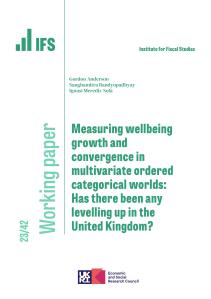This article was published in The Times, RedBox and is reproduced with permission.
The fact that London is the most unequal region in the country in terms of income is probably not surprising. During the mid-2000s a relatively well-off family in London (with an income higher than 90 per cent of Londoners) had an income five and a half times as high as a poor family in London (with an income higher than only 10 per cent of Londoners). This gap was much bigger than in the rest of the country. In the UK as a whole the ratio was about 4.
Now for the surprising bit. Income inequality within London has fallen dramatically since the recession. After accounting for inflation, the incomes of low-income households in London have risen by about 10 per cent since 2007, while falling by around 10 per cent towards the top. This has returned income inequality in London to its lowest level since the mid-1980s.
Income inequality across the country is in fact also still lower than before the recession, albeit to a much smaller extent than in the capital. This is partly due to trends in employment and earnings, which also help to explain why the falling inequality in the capital has been especially pronounced.
First, the good news. Nationally the proportion of working-age people in work was 1.5 percentage points higher in 2016 than in 2007. This has acted to hold inequality down: there are fewer people, and fewer households, without any earnings. London has been a turbocharged version of the national trend: the employment rate there has risen by 5.2 percentage points over the same period.
The bad news is that the earnings of those who are in work have fallen significantly. This has a tendency to hit higher-income households harder, because they rely almost exclusively on earnings for their incomes, while low-income households often get state benefits or tax credits too. In the UK as a whole, real median (middle) earnings for employees are still 5 per cent lower than before the recession. Again London is a more extreme version of the country as a whole: median earnings there are down 10 per cent. In addition, the earnings of very high earners, who disproportionately live in London, have performed even worse than average earnings.
Incomes in London remain higher than in most other areas. Median income in London is 11 per cent higher than the national average — though this excess is eaten up by higher average housing costs. In contrast, median income in the West Midlands (the poorest region) is almost 10 per cent below the national average. This is the result of 40 years of relative underperformance: in the mid-1970s average income in the West Midlands was about the same as in the country as a whole.
But whilst differences across the country are important, substantial and increasingly topical, we should not forget the bigger picture on income inequality. The overwhelming majority of income inequality is within rather than between the regions and nations of the UK, The gap between rich and poor in the West Midlands (and in every other region) is much bigger than the difference between Mr. Average of Birmingham and Mr. Average of London.








